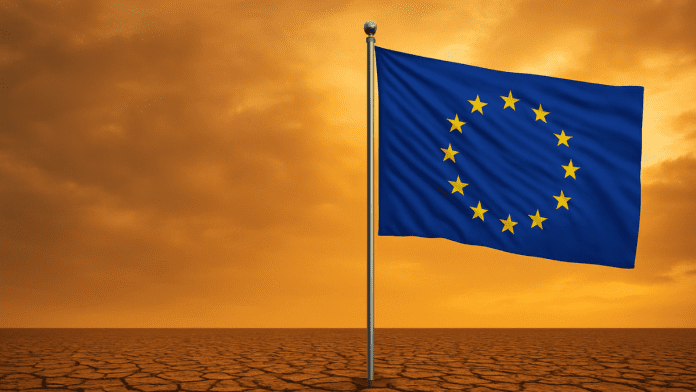🕒 Last updated on July 3, 2025
The European Union plans to pass a new climate law that will reduce pollution sharply by 2040. The goal is to cut greenhouse gas emissions by 90% compared to levels in 1990. This is part of the EU’s bigger mission to reach “climate neutrality” by 2050.
EU Proposes a Bold Climate Law
That means the amount of greenhouse gases released will be balanced by actions that remove them.
This 2040 target is among the most ambitious climate plans ever seen. The European Commission, which leads policy in the EU, says it’s necessary to keep global temperatures from rising too much. Scientists say this sharp cut is the least the EU must do to keep its climate promises.
However, not everyone in the EU agrees. Some countries and lawmakers worry about the cost. Others are concerned about whether it’s even possible without more support and flexibility. The proposal has already been delayed due to political disagreements in key countries like Germany and Poland.
Flexibilities May Help Countries Adapt
To help win support, the EU is offering some “flexibilities.” These are ways to make the goal easier to reach for member countries. One example is the option to use carbon offsets. That means countries could pay for climate projects in other countries instead of cutting all their emissions at home.
Under this plan, around 3% of the total emissions cut could come from these international offsets. These would be managed by the United Nations and allowed only from 2035 to 2040. They won’t be part of the EU’s existing carbon trading system. The countries offering these credits must also be trying to fight climate change themselves.
But this idea brings worries too. In the past, international offsets didn’t work very well. Many of the projects failed to deliver real emissions cuts. There’s also concern that there may not be enough high-quality credits available. Experts are unsure how much these credits will cost or how reliable they will be.
Political Roadblocks Ahead
The EU must get approval from its 27 member countries and the European Parliament. But there’s already pushback. Some leaders say the target is too high and not realistic. For example, one major country leader rejected the plan during a recent EU summit in Brussels. Other smaller countries have also raised concerns.
Apple, Meta, and the $700M Mistake: EU Delays More Fines—but the Clock Is Ticking
It would only take a few countries to block the 2040 law. That’s because the EU needs both a majority of the population and a majority of countries to agree. Some leaders want the plan to balance climate action with protecting jobs and energy security.
Inside the European Parliament, things are also tense. The biggest political group is divided. Some lawmakers want stronger climate action. Others fear the cost will hurt industries and families. The head of the EU Commission is caught in the middle. She must keep her coalition of centrists, socialists, and liberals together.
Global Pressure and UN Deadlines
The EU is not working alone. In 2025, nations from all over the world will gather in Brazil for the COP30 climate summit. Prior to that, the EU needs to present the UN with a new climate plan for 2035. This plan is called the Nationally Determined Contribution, or NDC.
To create that plan, the EU wants to draw a straight line from its 2030 goal to the new 2040 target. That would set a 72.5% emissions cut by 2035. But there’s a catch. The EU can only submit the NDC if all 27 countries agree. If even one country disagrees, the EU may have to send a weaker goal to the UN.
This could harm the EU’s global image as a climate leader. Meanwhile, other major countries like the United States have stepped away from international climate promises. That puts more pressure on Europe to lead by example.
The fight for the 2040 climate law is just beginning. As debate heats up, the EU faces one of its biggest climate tests yet.

